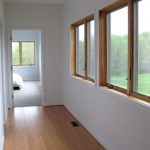Interior Design for a Japanese Restaurant: Creating an Authentic and Inviting Atmosphere
Designing the interior of a Japanese restaurant is a meticulous process that requires careful consideration of cultural nuances, aesthetic principles, and functionality. Beyond simply creating a visually pleasing space, the interior design should evoke a sense of the restaurant's identity, immersing diners in a genuine Japanese experience. This article will explore key aspects of interior design for Japanese restaurants, focusing on creating an authentic and inviting atmosphere.
Embracing the Principles of Wabi-Sabi
The philosophy of wabi-sabi, deeply rooted in Japanese culture, celebrates the beauty found in imperfection, simplicity, and the passage of time. It encourages embracing natural materials, textures, and colours, creating a sense of warmth and tranquility. This aesthetic principle can be incorporated into the design in various ways:
- Natural Materials: Utilizing natural materials such as wood, bamboo, stone, and paper creates a tactile and organic feel. Wooden beams, bamboo screens, and stone accents can be integrated into the design, adding warmth and a touch of rustic charm.
- Minimalist Approach: Wabi-sabi emphasizes simplicity and functionality. This translates to avoiding excessive clutter and focusing on clean lines and uncluttered spaces. By carefully selecting furniture and decor, the design can create a sense of peace and composure.
- Imperfect Textures: Embrace the beauty of imperfections and natural variations. Distressed wood, rough-hewn stone, and hand-crafted pottery add character and depth to the space, reflecting the philosophy of wabi-sabi.
By incorporating wabi-sabi principles, the restaurant's interior can create a serene and authentic ambiance, inviting diners to appreciate the beauty of simplicity and natural elements.
Utilizing Traditional Japanese Design Elements
Japanese design features distinctive elements that can be incorporated into the restaurant's interior to enhance its authenticity and charm. These elements evoke a sense of traditional Japanese culture and create a unique atmosphere:
- Shoji Screens: These translucent paper-covered screens offer privacy and create a sense of separation within the space while allowing light to filter through. Shoji screens can be used as room dividers, creating intimate dining areas or showcasing specific design features.
- Tatami Mats: These traditional straw mats are often used in Japanese homes and can add a touch of elegance and comfort to the restaurant. Tatami mats can be used for seating areas or as flooring in private dining rooms, creating a sense of traditional Japanese hospitality.
- Japanese Gardens: Integrating elements of a Japanese garden can bring the outdoors in, creating a peaceful and serene atmosphere. Small Zen gardens with rocks, sand, and carefully placed greenery can be incorporated into the restaurant's design, providing a tranquil escape for diners.
- Lanterns: Traditional Japanese paper lanterns are a beautiful decorative element that can add soft, warm lighting to the space. Lanterns can be hung from the ceiling or placed on tables, creating a warm and inviting ambience.
These elements can be incorporated in a subtle and understated manner, allowing them to enhance the overall design without overwhelming the space.
Creating a Functional and Comfortable Dining Environment
While aesthetics are essential, the restaurant's interior must also be functional and comfortable for both diners and staff. This includes:
- Comfortable Seating: Providing comfortable seating is crucial for a pleasant dining experience. Consider low tables with cushions or chairs with appropriate back support to ensure guests can enjoy their meal in comfort.
- Efficient Layout: The layout should allow for smooth flow of traffic, efficient service, and comfortable dining space for guests. Allocate ample space for seating, walkways, and service areas to minimize congestion.
- Adequate Lighting: Lighting plays a crucial role in creating the desired atmosphere. Consider using a combination of natural light, soft ambient lighting, and task lighting for specific areas such as the bar or kitchen.
- Sound Control: To create a peaceful and intimate environment, consider sound-absorbing materials such as wood paneling, acoustic tiles, or fabric wall coverings to reduce noise levels and improve acoustics.
By focusing on functional design elements alongside aesthetic appeal, the restaurant can create a space that is both welcoming and conducive to a positive dining experience.

Kan Japanese Restaurant Odd Archdaily

Kan Japanese Restaurant Odd Archdaily

Japanese Restaurants Dezeen

Kan Japanese Restaurant Odd Archdaily

Sushi Bar Designs 10 Restaurant Interiors Around The World Archdaily

Japanese Restaurants Dezeen

Shabu Kojo Archid Co Id Japanese Restaurant Interior Design

Nori Restaurant Interiors Inspired By Japanese Zen Gardens Offers Openness And Comfort Pendulum

Japanese Restaurants Dezeen

Kinka Izakaya Original Toronto Restaurant Interior Design Japanese








